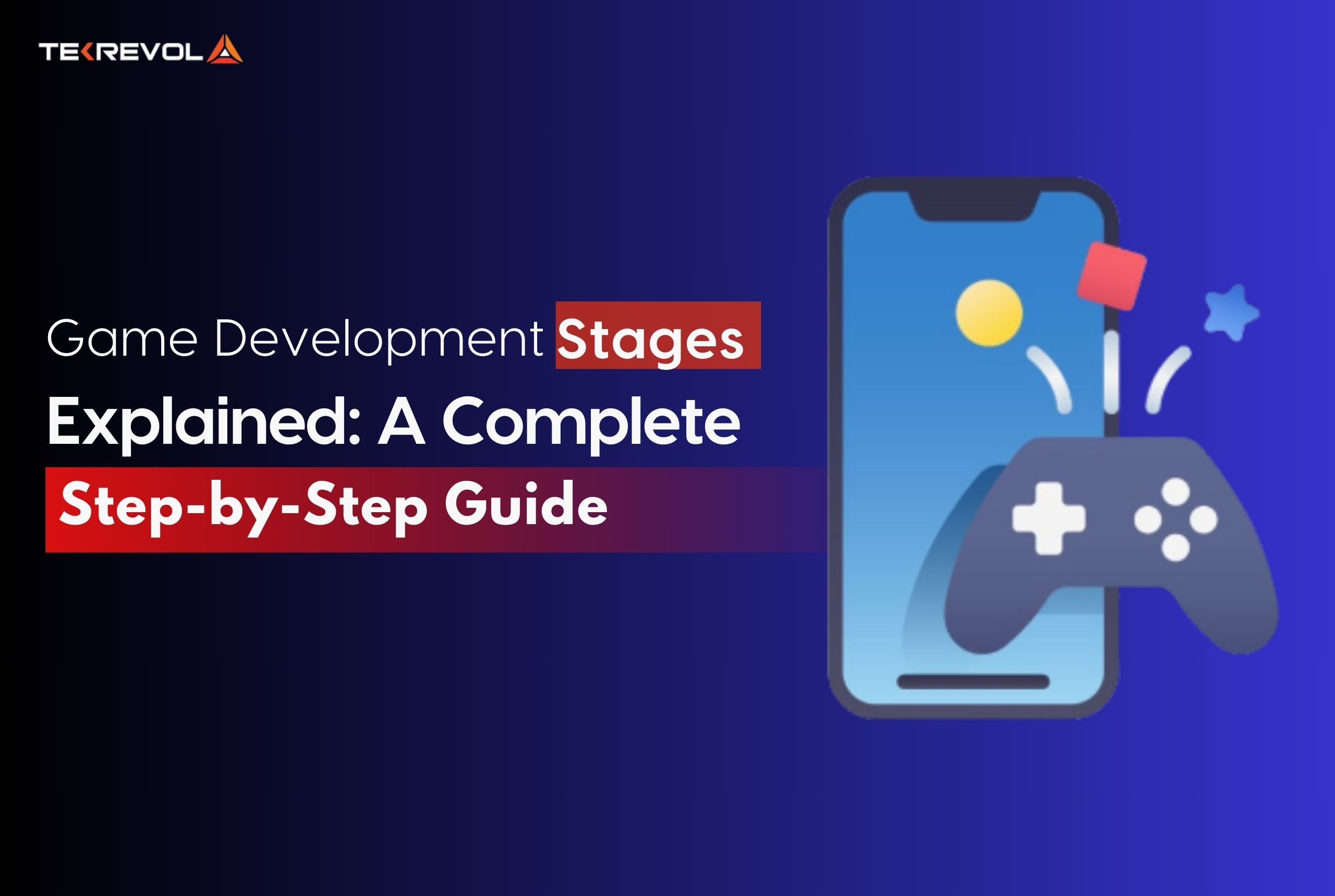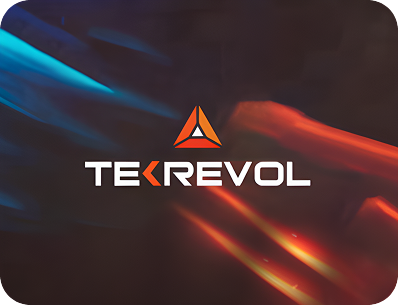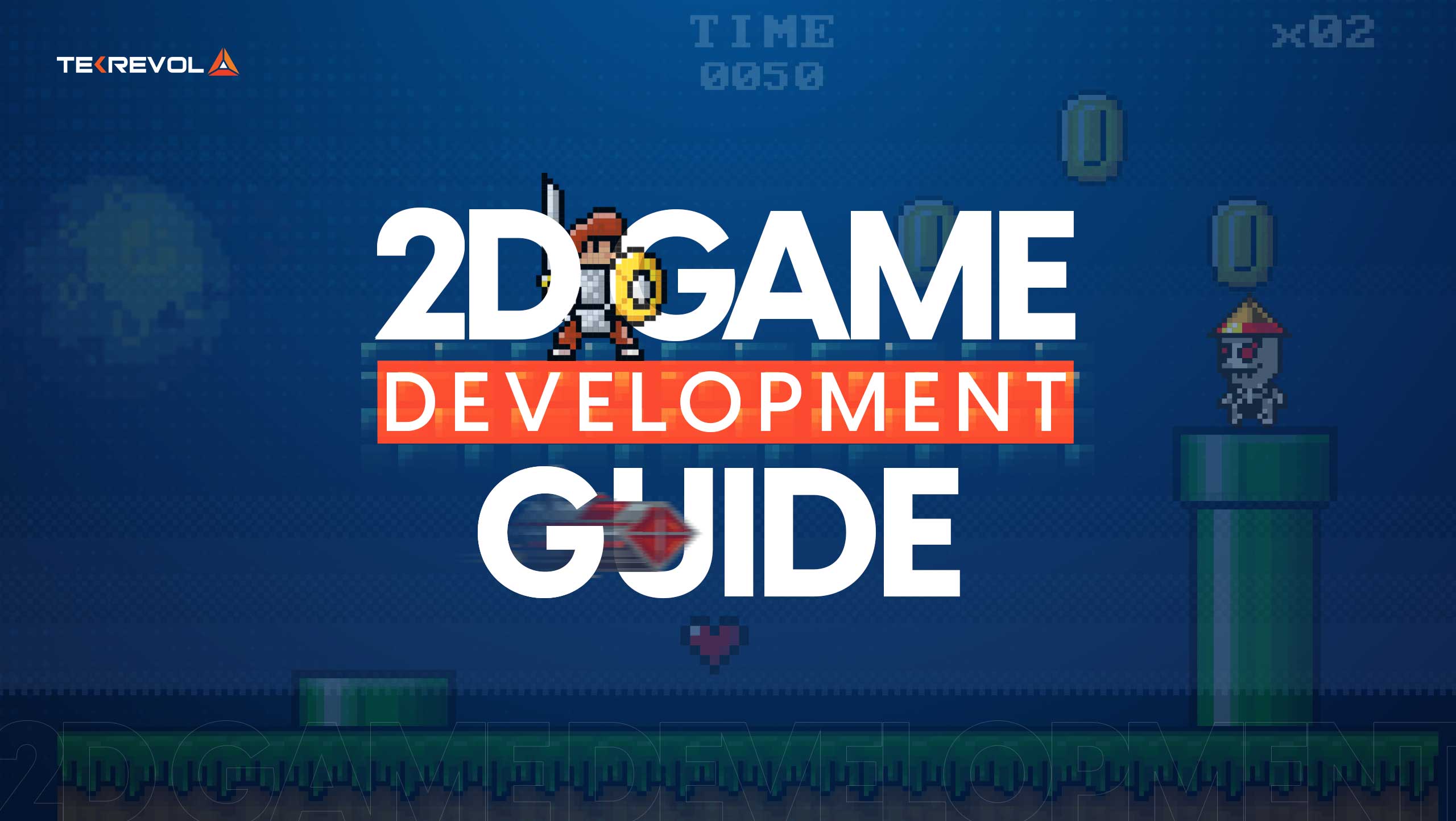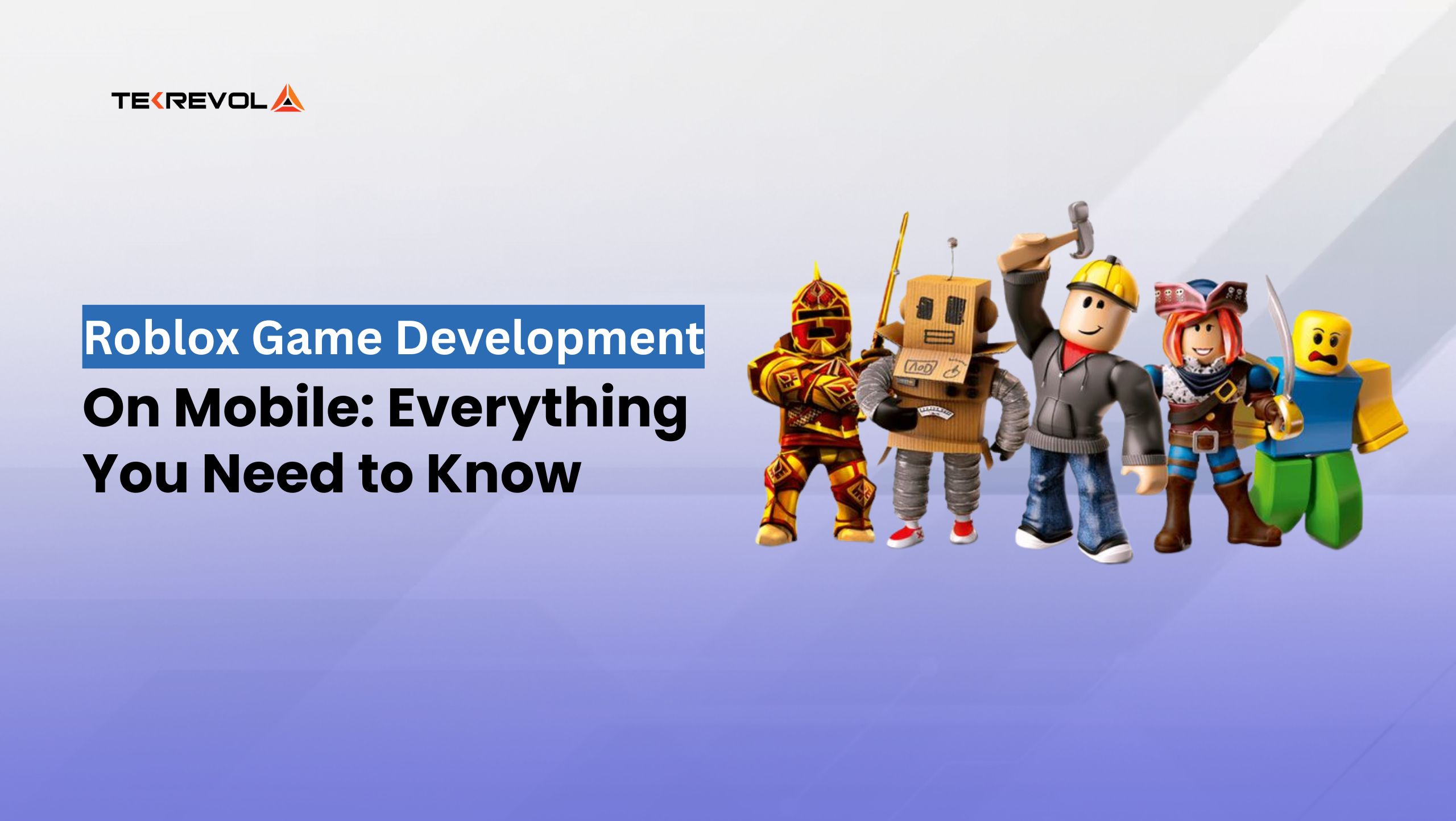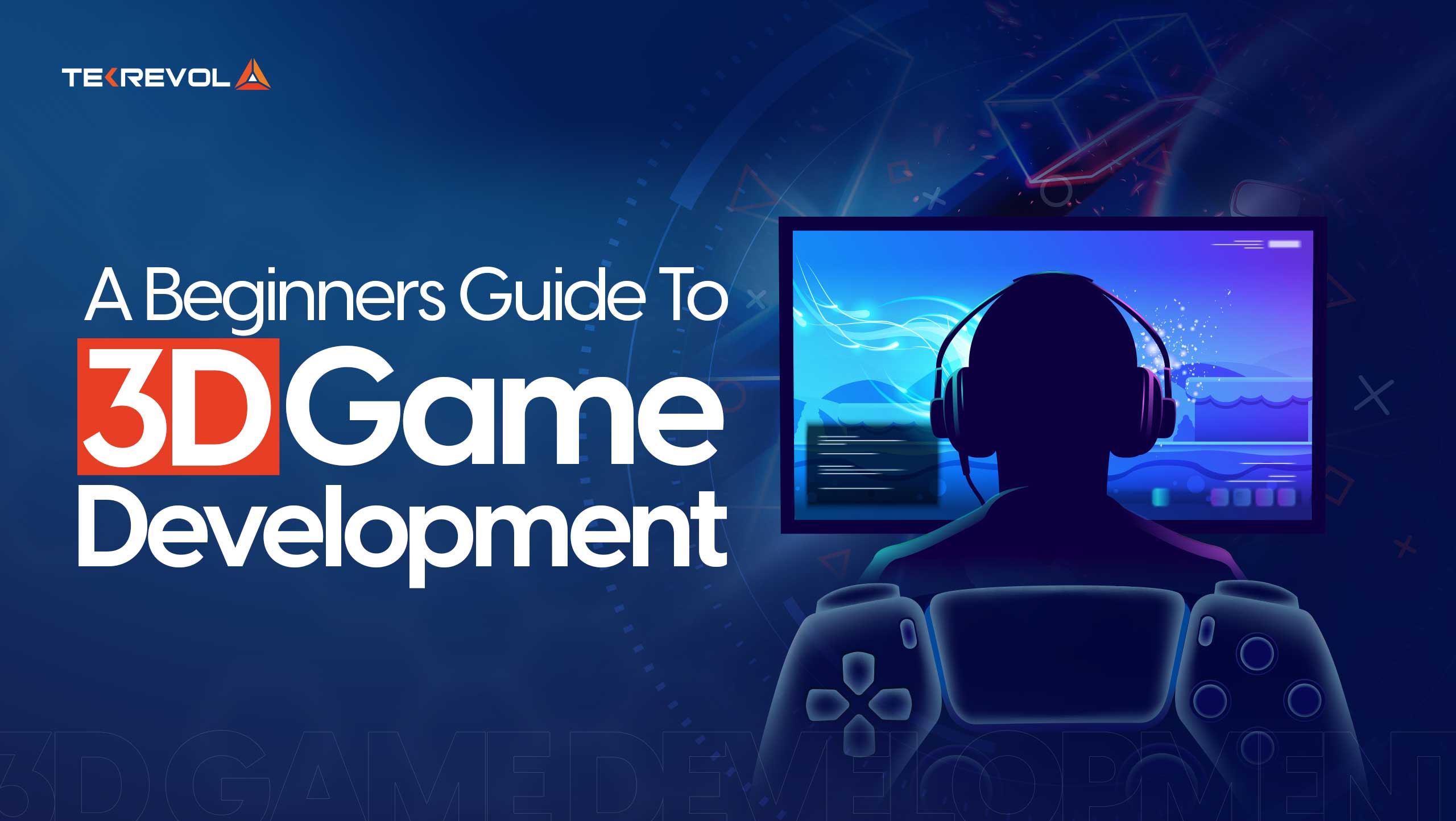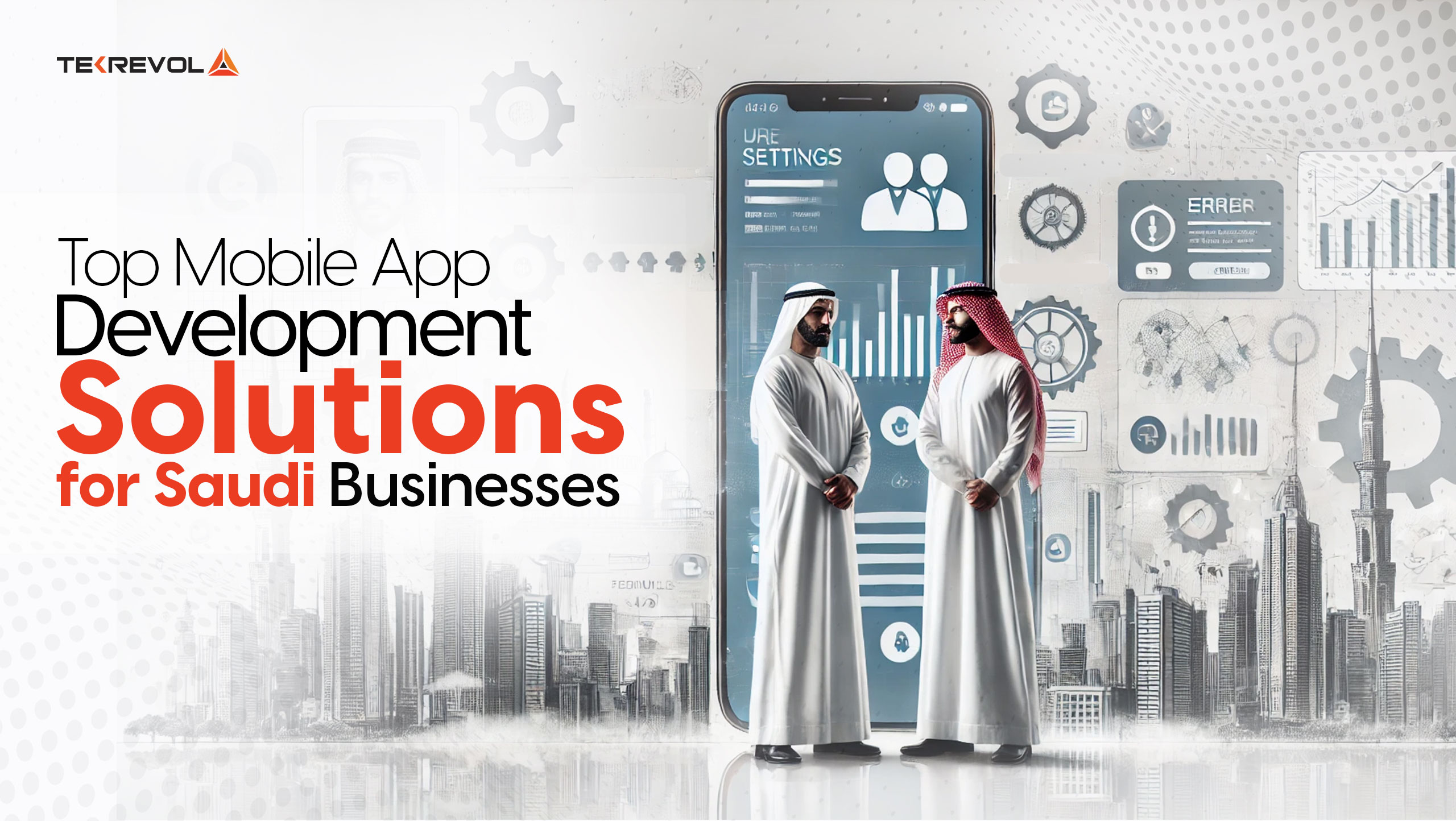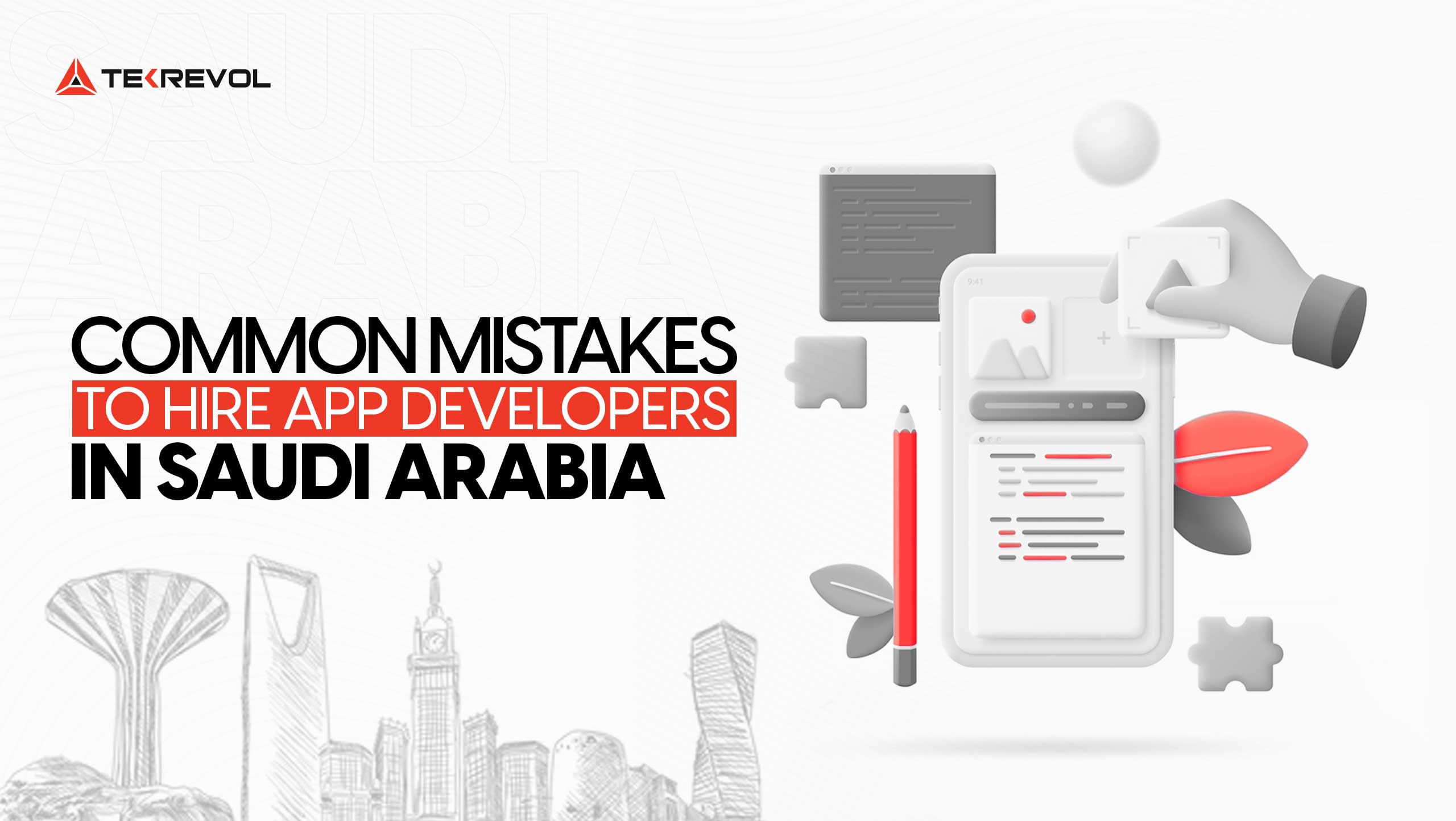Have you ever looked at visually stunning games like Fortnite, The Legend of Zelda mechanically brilliant game, and asked, “How was this made? Game development is a complex journey that combines artistic vision, cutting-edge technology, and relentless dedication. It involves a series of clearly defined stages, each playing a critical role in turning a raw idea into a polished final product.
According to Grand View Research, the gaming industry is projected to reach $583.69 billion in revenue by 2030. Yet, despite this growth, 90% of indie games fail to achieve commercial success, largely due to overlooked development stages and misjudged complexity.
In this guide, we’ll walk you through the full game app development process, one step at a time. From the first spark of an idea to the final launch.
So, let’s get started!
Step-by-Step Guide to Modern Game Development Stages
While some might say the game development process consists of just three stages, pre-production, production, and post-production, it’s not that simple. Comparing it to building a house, it’s like saying, “create the blueprints, nail it together, and move in.” Sounds a bit too easy, right?
If you skip key steps like laying a strong foundation, setting up the proper wiring, or ensuring the roof is leak-free, you end up with a poor structure. The same applies to game development.
Cutting corners might look like a time-saver, but it leads to problems like bugs, poor reviews, or, worse, a game that never launches. Let’s explore the stages in detail.
Here are the 7 stages of game development strategy:
Stage 1: Conceptualization and Planning: Laying the Foundation for Your Game
Every great game begins with a spark, often hitting you when you least expect it. Whether you are walking down the street or casually chatting with friends, one never knows when the urge to develop a new game may come.
One idea can ignite full-fledged game development, followed by carefully crafted plans. Hence, some key issues must be answered before plunging into the development process, given the most different consequences we can think of about the path in which your project proceeds.
Key Questions to Consider at the Planning Stage:
What genre is your game? The genre (platformer, RPG, strategy, etc.) will have a knock-on effect on many other design aspects: gameplay mechanics, art style, narrative, etc. Will it focus on exploration, puzzling, combat, or storytelling?
Is your game 2D or 3D? Whether your game is 2D or 3D will also affect design and development. A 2D game will be perhaps easiest to develop, while 3D game development will tend toward the more immersive end of the scale. This choice will also simplify whatever game engine/tool/resources you select.
What art style do you see yourself going with? A key component of both multiplayer and single-player games is their appearance, which can be animated cartoon, realistic, pixelated, or some mysterious prototype. Early definition of the art style guarantees adherence during design and development.
What gameplay mechanics will the game have? Mechanics are the essence of your game. Will your players solve puzzles, fight, or explore new worlds? Defining core gameplay loops ensures that you will program features that keep players engaged.
Tips for Crafting a Strong Game Concept
- Mind Mapping and Brainstorming
Utilize mind maps or brainstorming tools such as MindMeister or Miro to unleash your creative side. You can make connections between gameplay mechanics, narrative themes, and character progressions by visualizing your thoughts.
Action Tip:
Don’t lock your mind map in place. Let it grow with your game, it’ll surprise you with new ideas and unexpected links.
- Competitor Analysis
Assess the successful and not-so-successful games of your genre. What made The Witcher 3 or Cuphead work for them, but can be tweaked to your advantage? Conversely, identify the common themes found in complaints of players for tying making a game similar.
Action Tip:
Make a list of the best games in your genre, analyze the game’s strengths, such as innovative mechanics or captivating storylines, and weaknesses, such as poorly executed mechanics or tedious gameplay loops. This can advise you on not making the same mistakes while seeking the opportunity to innovate.
- SWOT Analysis
So, conduct a thorough SWOT analysis (Strengths, Weaknesses, Opportunities, Threats) of your game idea. This strategic tool lets you understand the internal and external parameters that shape the entire development process.
Identifying one’s strengths (like unique gameplay or narrative) and weaknesses (such as limited resources or unproven mechanics) will help to deal with possible hurdles even before they arise.
Actionable Tip:
Regularly revisit your SWOT analysis to track your game’s progress. As you refine your concept, new opportunities or threats might emerge that require adjustments.
Stage 2: Pre-Production: Laying the Groundwork for a Functional Game
Validation stages are over, and pre-production begins, a crucial time where abstract creativity becomes real and verified in concrete, actionable strategy. Development is not the only thing this stage creates. It creates everything that follows.
Defining the game architecture – what it is, how it is to work, and what it needs- is the goal of the pre-production. Game development timelines, budget projections, tool selection, etc. This enables the entire team to work together, united toward a common goal to avoid boundary issues and unpleasantly costly surprises in development.
Core Components of Pre-Production
1. Game Design Document (GDD) Crafting
Think of the GDD as the blueprint of your game—it’s the one document you absolutely can’t skip during the early stages. It is the reference handbook for your group, holding every creative and technical aspect of the game. Whether it is a small mobile puzzle or a big VR game adventure, the GDD guarantees everyone, from concept artist to lead developer, is on the same page.
What are the essential ingredients required to create the best GDD?
- Mechanics and Gameplay Loops: Define core interactions, progression systems, and control schemes.
- Narrative & Characters: Narrative plot outline, dialogue approach adopted, character bios, and motivation sketches.
- Visual Direction: Define Look and Feel, color palettes, style guide, and mood boards.
- Audio Designing: Musical styles and sound effects with emotional cue listing.
Pro Tip: Your GDD will be under constant evolution; however, begin with a set and keep it updated frequently.
2. Picking the Proper Technology Stack
Technology is your toolbox, and the choice of a particular toolbox will affect everything from the speed of your development to visual fidelity. In this stage:
Game Engine Selection: Unity and Unreal Engine, and Godot have different strengths that can be of help according to the genre or platform of your game.
Development and Design Tools: Utilize industry-standard 2D/3D modeling tools like Blender or Maya, and audio editing software such as FMOD or Audacity. For concept art, AI tools like Stable Diffusion can be highly effective.
Platform Planning: Whether for mobile, PC, or consoles, make sure that your tech stack supports performance optimization and cross-platform compatibility.
3. Budget and Resource Mapping
Budgeting for pre-production helps to manage risks and maintain momentum. You are not only tracking money; you intelligently allocate resources.
Costing in Detail: Cost out what might run under programming, animation, marketing, localization, and testing.
Game Development Timeline: Realistic milestones with deliverables, review points, and testing phases should be established.
Contingencies: It is always a good idea to save time and money for unforeseen events such as pivots, scope creep, or total redesign.
Best Practices for Maximizing Success:
Starting with GDD Templates: Start by choosing an industry-standard template to kick off your GDD. Modify it to match your game type and focus on making the elements modular, as it’s easier to adapt to changes and updates.
Centralize and Organize Workflow Early: Make sure your project management applications, such as Trello, Jira, or Asana, are accounting for the workflow from day one. With a high level of organization, it is possible to hold them accountable for their tasks and give visibility to the team on which stage the tasks are being worked on and when.
Protect Responsiveness: Schedule changes are a common reality in the game development process. It’s wise to incorporate flexibility into your workflow, features, and budget to accommodate both creative freedom and technical adjustments. Always have an iterative feedback loop with playtesting to help you with changes, rather than making these changes purely from gut instinct.
- Not sure how to organize your game’s blueprint?
- Collaborate with us to create a solid GDD that guides your game from start to finish.
Stage 3: Production: Building the Playable World
Production is where everything starts to take shape. It is the longest and most demanding stage in the game development process, where early ideas and planning are turned into a working and playable product. Everything from art, code, sound, and animation is assembled, polished, and stitched together to make one big experience.
When creative energy meets technical execution. Artists, developers, designers, writers, and sound engineers work together to bring the vision into existence, iterating for every detail to fit with the tone, style, and mechanics of the game.
Let’s break down key areas of focus:
1. Art & Visual Design
Visuals are the first stimuli for the players; in this phase, focus is on creating a world that is rich and coherent visually.
Character & Environment Modeling: 2D or 3D models are created by the artists depending on the style of the game. Blender, Maya, Photoshop, and these will be used for designing everything from characters to objects in the game environment.
Animation: Once models are built, animators bring them to life, whether it’s fluid character movement, environmental transition, or facial expressions.
Art Direction & Style Guides: Consistent color schemes, lighting treatments, and texture qualities help to unify the experience in the game world. Art direction is to ensure that all visual elements support the game’s tone.
2. Programming & Game Mechanics
This is where design turns into interaction. Programmers build the systems that govern how the game functions.
Gameplay systems: It wasn’t just about the mechanics like combat and movement—they were refined through real player feedback, which made gameplay even more enjoyable.
Artificial Intelligence (AI): Developers design AI systems for NPCs and enemies to behave intelligently and react responsively, enhancing both difficulty and realism.
Physics Engines: Physics systems are responsible for everything from collision to gravity and how realistically these objects and characters behave in the world.
Input and Controls: The game depends on a responsive input and control system, whether it is a touchscreen swipe or a button press on a console controller. The input systems will immediately link with the feel of the game
3. Sound, Music, and Audio Integration
Sound converts static scenes into vibrant, breathing environments.
Sound Effects (SFX): Weapon reloads, footfall, and other background noises all contribute to the mood and atmosphere, giving players crucial gameplay feedback.
Music Composition: Dynamic soundtracks that adapt with gameplay play ranging from a hectic battle score to quiet exploration melody.
Audio Middleware: FMOD and Wise, among other tools, allow the audio team to synchronize sounds and music to in-game events, making the audio reactive and immersive.
Tips for Successful Production Phases
Production is chaotic when unstructured. Here’s how teams can keep things on track:
Break Down the Work
Big job to be broken down into smaller, specialized tasks. For example, do not assign as one task the “character creation” assignment, but modeling, rigging, animating, and texturing separately. This accelerates workflow and enables various departments to work in parallel.
Iterate and test a lot.
Frequent playtests are the only way to see what’s working or what’s not. Iteration allows teams to adjust their mechanics, visuals, and audio, rather than wait until the final stages to change things on a massive scale.
Cross-Team Collaboration
A collaboration process is involved in making the game. Developers must get along with the artists.
Audio teams need to have this cross-team communication with “team designers.” Using such project management tools, like Jira, Trello, Asana, or Monday.com, creates clarity for the entire team to work toward shared milestones.
- Want to see your game idea come to life quickly?
- Build an interactive prototype with our experts and test your concept early.
Stage 4: Testing & Quality Assurance: Polishing for Perfection
The core gameplay is done but not yet ready for release. The next stage is Testing and Quality Assurance (QA), the crucial step in the game development life cycle, which focuses on the eradication of bugs, fixing its balance, and ensuring that the player experience across platforms is smooth and pleasant. This stage focuses on:
- Immersion-breaking gameplay bugs
- Graphical glitches, i.e., texture flickering or missing assets
- Atmosphere-ruining sound sync issues
- Performance drops depending on hardware type
- Imbalanced gameplay that leads to low player retention
1. Functional Testing
This handles whether the game does what it is intended to do. QA testers verify every mechanic set in the game, from combat to how the inventory behaves to how the NPC interacts. If a player interacts with it, it can be tested functionally.
- Character movement and combat flow
- Game rules and mission objectives
- UI/UX elements and their responsiveness
- All interactions as per the Game Design Document (GDD)
2. Usability Testing
A good game is not only entertaining but also intuitive. Usability testing guarantees that, given the game’s intuitive design, players understand how to engage with it without explicit instructions.
- Clear menus and interfaces
- Logical control mapping
- Easy onboarding for new users
3. Performance Testing
Games should run smoothly across all target devices. Such testing checks for a working performance test even on low-end systems and looks for checks on:
- Frame rate maintenance
- Memory loads
- Loading time
- Overheating and battery drainage of an actual device (especially a mobile one)
4. Playtesting
This is when real players come in. The developers will release early versions of the game to a selected number of users, so they can come back with honest feedback on what it was really like in terms of gameplay, level of difficulty, and fun.
- Watch how real users behave
- Input on the fun factor and clarity
- Adjust mechanics based on how players play
Best Practices for a Perfect QA Process
- Initiate Beta Testing Programs
Launch closed or open beta releases of the game. This will help uncover hidden bugs and is a great opportunity for direct interaction with the community. Encourage structured feedback through in-game prompts or dedicated forums.
- Concentrate on Relevant Feedback
Specific questions should be asked: is the combat fun? missions clear? Or is there anything too hard or too easy?.
But prioritize feedback directly linked to player satisfaction and interaction with the main mechanics of the game.
- Use Bug Tracking Tools
Adopt systems like JIRA, Mantis, or Bugzilla to manage bugs efficiently. These tools help log issues, assign severity levels, and track progress across QA teams.
- Create a Constant Feedback Loop
Keep the flow of communication up and running between testers and developers as well and designers. The sooner bugs are reproduced and understood, the sooner bugs are fixed.
Stage 5: Pre-Launch: Perfecting and Promoting Your Game for Impact
The Pre-Launch phase is where good games become great. It is the last chance for gameplay polishing, performance optimization, and excitement-building. A strong pre-launch lifts visibility and sets an ambiance for the launch day, assisting in the growth of a loyal player base.
1. Final Adjustments
Visual and Audio Polishing
The game is almost there, now it is time for those final visual and sound touches to ramp up the player experience. Polish your visual effects, perfect your animations, and strike a balance with all the audio so that everything feels seamless and immersive to the player.
User Experience Refinement
Kill the friction. Make sure the UI is clean and intuitive, the transition between scenes feels smooth, and the feedback from a player’s action feels responsive. These small fixes can greatly influence how players perceive the game as a product and their enjoyment.
Gameplay Balancing
Fine-tune key mechanics to make sure the actual implementation of gameplay is fair, engaging, and fun. Remove those frustrating difficulty spikes, overused gimmicks that always work, overpowered abilities, and broken, inconsistent mechanics. Make sure it challenges them to do something rewarding rather than being frustrating.
2. Performance Optimization
Cross-Platform Compatibility
Another consideration is to ensure your game runs very smoothly across mobile, console, and PC platforms. Minimize load times, allow variable graphic configurations, and cap the frame rate so the game feels polished irrespective of the place where it is being used.
Device Testing
Test the game on all varieties of hardware manufacturers and models. Using automated tools and profilers will be great for tracking bottlenecks to rectify the issues in the early stages of game development. What seems okay on a high-end PC could be overwhelming on an older mobile device, so plan accordingly.
Mobile Optimization
For mobile gamers, eSports-level performance is a must, but it should come without battery drain or excessive data usage. The game should be optimized for minimal resource consumption while still delivering a solid visual experience, which boosts ratings and player retention.
Basic Pre-Launch Tips:
Even the greatest games need visibility. Players need to be excited by pre-release marketing and engaged.
Teasers & Trailers
Start by teasing the crowd, then follow with a trailer that reveals the gameplay and unique appeal of the game.
Build a Community
Utilize platforms like Discord and Reddit to disseminate announcements and content from behind the scenes while engaging with fans.
Have a Pre-Launch Timeline Announcement
Announce your release date well in advance and create hype around scheduled events like trailer releases, AMAs, or simulator releases.
Collaborate with Influencers:
Work with streamers and other content creators that appeal to your demographic in order to expand your reach and gain some early feedback.
Prioritize Feedback:
Take beta testers as co-pilots along with early players. Try to implement their greatest recommendations and thank them openly for their contribution.
Stage 6: Launch: Turning the Game Into a Global Experience
Launch day is a big deal, it’s when all your ideas, long nights, and months (or even years) of work finally come together. However, the excitement is overshadowed by the strategic base that prepares the groundwork for release, impact, and acceptance by the audience.
It begins from the finishing touches on distribution to activating post-launch engagements and is all about making the game shine from day one.
1. Choosing the Right Distribution Strategy
Ensure that your game reaches the targeted player by selecting the right distribution channels. Each channel has its specific advantages, considering the demographic target as well as the kind of game:
PC Game Platforms: For consideration, take Steam, Epic Games Store, and GOG; they contain great possible user bases and even offer community tools. Choose according to fees, visibility, and accepting genres. As to indie games, Steam is the most recommended because of discoverability and user engagement.
Mobile App stores: For a mobile app, focus mainly on the Apple App Store and Google Play. Submissions need to be pretty robust, both technically and in terms of content.
Console Markets: For consoles like the PlayStation, Xbox, and Nintendo Switch, each will have its certification procedures. These take longer and are rather more rigorous, so your submission should be made much earlier and monitored very tightly on quality control.
2. The Complete Final Pre-launch Checklist
Examining every system, feature, or piece of content finalized and thoroughly tested would be as follows before actually making it available to the whole world:
Last-Minute Bug Sweeps: Last QA buzzes for closing loopholes available for critical bugs, crash points, or balancing issues missed earlier in previous builds.
Server and Network Readiness: For multiplayer or online-enabled games, confirm that your servers are prepared for impending high-volume traffic on launch day. Use load testing to simulate and ensure stability.
Asset Verification: Assets for games should all be checked for completeness and polish, such as the UI texts, localization, artwork, and cutscenes. A missing letter or wrong visuals could ruin the user experience.
Pricing and In-App Systems: The monetization logic should be double-checked concerning its payment gateways and in-game store. Clear communications of prices, easy checkouts, and transparency will inspire trust and diminish risks in refunds.
3. Powering the Post-Launch Momentum
The success of your game does not end at the release, but it is dependent on what you do next. Through community involvement and post-launch marketing, apps will be able to build far deeper layers of continuous downloads and reviews.
Targeted Ad Campaigns: Run ads across YouTube, Meta (Facebook/Instagram), and Google Ads to target users based on interests and behavior within gameplay. Launch-day promotions will further boost visibility.
Influencer Reach: Reach out to streamers and gaming influencers to create authentic content such as a Let’s Play or review, or walkthrough, proposing direct engagement of your game to the very same compulsion aggregate audience.
Inspire and Invite Reviews: Ask your users to leave reviews when they’re done with their first couple of uses. Authentic feedback on app stores or Steam will enhance algorithmic visibility and lend social proof.
4. The Best Practices for a Smooth Launch
To impact and build player confidence from the start, put into consideration these expert strategies:
Create Hype with Countdown Events: Before launch, use live countdowns and streams of developer Q&A sessions to build buzz. An effective launch streaming event humanizes the team and demonstrates key functionalities.
Respond Instantly to the Feedback of Initial Users: Feedback from consumers just after launch often indicates problems with real-world usage. Public acknowledgment of reports from user communities, rapid hot-fixes, and proof that the company cares for the experience of the community.
Real-Time Tracking of Your Game Performance: Use analytics to view how well your new game performs with the following key metrics:
- Downloads and installs
- Daily and monthly active users (DAU/MAU)
- Session length and retention metrics
- Crash reports
- Revenue and conversion rates
Such early checking of data can lead to informed decisions for balancing, content patches, or re-targeting in marketing.
Stage 7: Post-Launch Support: Sustaining Your Game’s Lifespan
But really, launching a game is just the first step. What determines its long-term success is how well the game is supported after launch. Games that are poorly supported post-launch quickly vanish from the public consciousness, regardless of how well-anticipated or promising their launch may have been.
These updates, performance fixes, player engagement, and, most importantly, community-driven improvements are what keep the momentum going.
1. Updates and Fixes
Any tester can find a lot of flaws, imbalances, or usability problems, real players can actually do that. Most of the time, what needs to be done is to fix them fast.
Critical Bugs Should be Prioritized: If you want to keep your credibility, issues like crashes, damaged saves, and faulty gaming mechanics need to be resolved right away.
Performance Improvements: Users can enjoy the game effortlessly, regardless of the platform or device they’re using.
Player Controls: Supposed difficulty spikes, overpowered mechanics, and other gameplay exploits must be adjusted according to player and in-game data.
Fixing issues quickly shows that you care about your player base, and this builds a reputation as being trustworthy.
2. Expand through fresh content
The best way to maintain and gather users is to keep fresh material coming in, to make the game develop a better interest.
How about the DLC (Downloadable Content): This should add new storylines, new modes, maps, or characters to the original game.
Live Events and Challenges: An event shall usually last for a short period and usually involves a challenge that can attract the gaming community’s attention again toward the game.
Seasonal Updates: Associating with popular holidays, seasons, cultural feasts, etc., gives a game its feelable and tangible relevance at the current time.
Keeping a live service game alive means feeding it fresh content, each drop fuels player excitement and opens doors to new revenue.
3. Build and Empower the Community
Your community is your game’s main muscle post-launch. Active community members can amplify your game’s reach, critiquing its progress and rehearing its songs.
Two-Way Communication: Talk back at your customers, using social media, Discord, Reddit, and in-game notices.
Transparency and Insight: Keep fans in the loop on updates on the development, what goes on behind the scenes, or the expected future outlook, with a little teasing.
An active community keeps the momentum going by supporting new players and promoting the game.
4. Strategic Longevity Planning
Setting up an organized post-launch plan, rather than just an effective response to issues, forms a good pattern for systematic growth and sustainability.
Update Roadmap: Map out future features and content drops, as well as bug fix schedules. This would boost players’ confidence.
Event Calendar: Plan and implement continuous, regular, and event-based in-game activities such as influencer and gaming partner collaborations to keep everything moving.
Dedicated Development Resources: Have a dedicated team working on post-launch updates so that the core game does not remain static.
Such long-term plans will ensure that the game not only survives but also flourishes.
5. Bringing in a Feedback Mechanism
Above all else, listening to your players is vital, but even more crucial is acting upon what they tell you.
In-Game Feedback Tools: A player can easily report a bug or suggest a feature directly from within the game.
Community Polls & Surveys: Involve your audience in decision-making for future updates or content priority.
Data-Driven Improvements: Data-driven improvements are based on analytics from gameplay sessions, purchase behavior, and retention data, and will guide future updates.
Players tend to get more loyal when they see their voices reflected in the evolution of the game.
6. Provide Excellent Customer Support
Even the most fun games can be easily spoiled by bad support. On the contrary, an effective customer service experience can convert problems into one-time engagement opportunities.
Multi-Channel Help: Set up FAQs, help centers, bots, and email/ticket support for speedy issue resolution.
Fast Response Times: Solve a player’s problem quickly and build more trust.
Track and Learn: Maintain a log of those common complaints or issues to continue improving support processes and in-game features.
Support isn’t just all about solving problems; it’s about showing players they care and that they matter.
- Want to Take the Next Step Toward Game Development?
- Our team is here to support you at every stage.
Top Game Genres Dominating 2025
In 2025, the gaming universe is now more lively than ever, transforming technology by adapting to preference changes among players. From AI-based storylines to feel-good life simulation games, these are the most popular game genres this year.
1. Simulation Games
Simulation games bring you a realistic experience mimicking real-world activities, ranging from flying planes to managing cities. Players are drawn by the detailed environments and the slow play of long-term planning.
Example: Microsoft Flight Simulator 2024- With its constant focus on stunning realism and precise world mapping, it will undoubtedly continue to develop features in the next-generation zone in 2025.
2. Role-Playing Games (RPG)
These games are set in fictional worlds and give players a chance to embrace a character and play an immersive storyline. Customization, decision-making, and progression systems are major highlights.
Example: Final Fantasy XVII little bit of everything: Such a game that keeps its fans on the edge since it is so emotionally charged, tactically sound, and has a profound narrative.
3. Sports Games
Sports games offer simulations of real-world sporting events and fast-paced action with competitive fun. The definition of this genre comprises realistic graphics, athletes’ likenesses, and multiplayer modes.
Example: FIFA 25– Feeding enthusiasts, advanced AI, enhanced player animations, and the latest leagues keep this sports game ever in favor.
4. Battle Royale Games
Battle royale games drop dozens of players into one map for the fight of being the last one standing. It mixes survival, exploration, and fast-paced action.
Example: Call of Duty: Warzone 2.0 – Has resurrected itself time and again with new maps, weapons, and seasonal events.
5. Strategy Games
Strategy games are about careful planning, resource management, and tactical execution. They appeal to those who want a mental workout.
Example: Age of Empires IV, with its expansions and thriving multiplayer community, continues to be a cornerstone of modern strategy gaming.
6. Fighting Games
These games bring you face-to-face with opponents, testing your reaction time and skill. From chilling at home to competing on stage, they’ve got a spot everywhere.
For Example, Tekken 8 delivers refined mechanics, an extensive character roster, and immersive gameplay, making it a strong contender in the competitive fighting game scene.
7 . Puzzle Games
Puzzle games test the player’s problem-solving skills in logic, pattern recognition, and strategy. They are especially popular on mobile and casual gaming platforms.
Example: A stunning adventure puzzle, The Room VR: A Dark Matter, blends a mysterious story with sensational action.
8. Racing Games
The racing genre embodies speed and competitive tracks. From arcade fun to driving simulators, there is a game for every racing fan.
Example: Forza Motorsport 2025- Offers stunning realism, detailed vehicle physics, and an amazing variety of tracks and cars.
9. Survival Games
An obvious theme found in most survival games is that the player is tossed into a hostile realm where they must gather resources, craft their tools, and stay alive against all odds.
Example: Sons of the Forest is creepy, intense, and super fun—especially when you’re playing with friends. Survival feels real here.
Build & Launch Your Next Big Game with TekRevol
If game development has caught your interest, you’re not the only one. Let’s bring your next big idea to life. TekRevol is a top game development company with an impressive legacy of creating 2D and 3D games of world-class quality across all platforms.
We handle the full game development lifecycle, from creative concepts and coding to testing and long-term support, with innovation and expert strategy.
With years of experience in creating immersive and powerful games, TekRevol ensures your brand gets noticed in the competitive gaming landscape. In case you are going for full-cycle development or perhaps seeking assistance in a specific development phase, don’t worry. We have both the creative vision and technical expertise to turn your concept into a successful game.
Whether you are looking for a simple mobile game or a full-fledged, complex multi-platform experience, we walk you through the entire game development process to fulfill your needs.
- Thinking about launching your own game?
- We design, develop, and deliver immersive gaming experiences that stand out.

